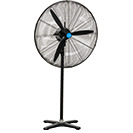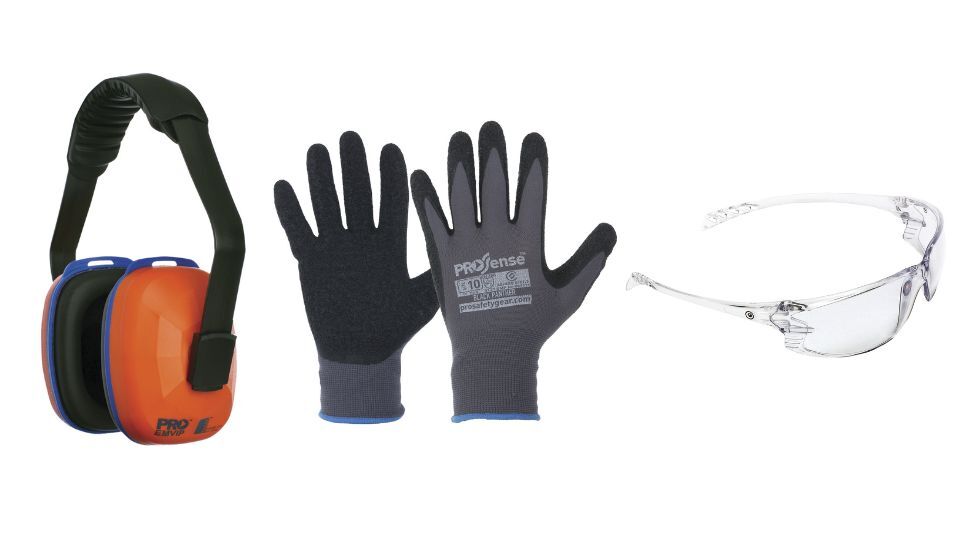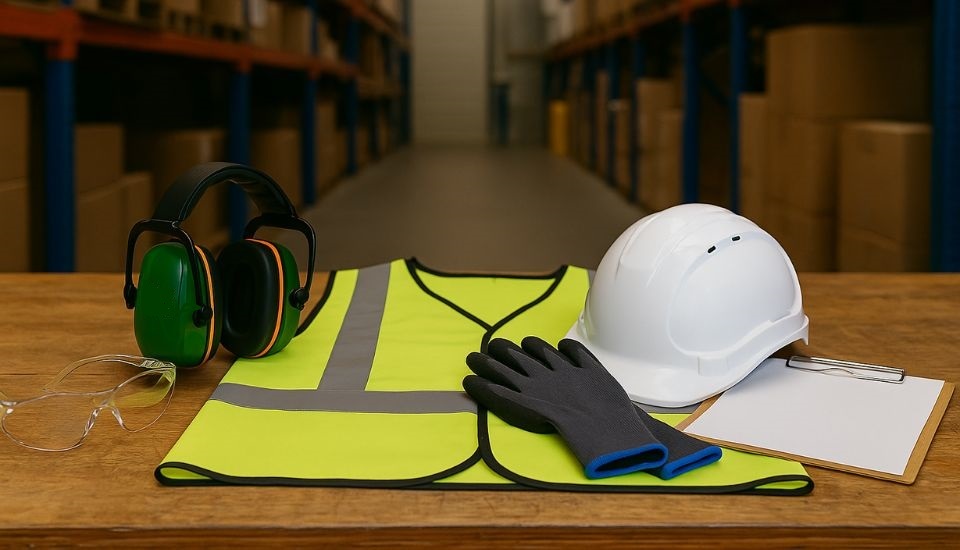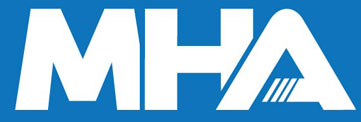How Often Should PPE Be Replaced?
Date Posted:21 August 2025
PPE doesn’t last forever. From hard hats to harnesses, safety gear has expiry dates and signs of wear. Learn when to replace PPE to protect your staff and stay WHS compliant.
Verdex Insights: At a Glance
-
The Challenge: PPE naturally wears out with time, exposure, and use. Damaged or expired protective gear compromises worker safety, breaches WHS duties, and exposes businesses to compliance risks and liability.
-
The Insight: Every category of PPE (from hard hats and respirators to hi-vis clothing and footwear) has a defined service life and replacement cycle. Regular inspections, correct storage, and timely replacement are essential for maintaining protection and WHS compliance.
-
The Verdex Solution: Verdex supplies WHS-compliant PPE clothing and safety gear designed for warehousing, construction, logistics, and industrial environments. We help businesses stay protected and audit-ready with durable, compliant products and expert advice on maintenance and replacement schedules.
Why Replacing PPE Matters
Personal Protective Equipment (PPE) is a vital safeguard in any workplace—but it doesn’t last forever. Over time, even the most durable PPE can degrade, expire, or become damaged through regular use.
Continuing to use worn-out or faulty PPE increases the risk of injury, reduces compliance with Work Health and Safety (WHS) regulations, and may expose employers to liability. Under WHS laws, employers have a duty of care to provide effective, well-maintained PPE that offers adequate protection.
At Verdex, we believe it is an important Knowing when to replace PPE clothing and safety gear isn't just good practice—it’s a legal and ethical responsibility that helps keep workers safe and businesses compliant.
Factors That Affect PPE Lifespan
Type of Material
Some PPE is made for single use (like disposable nitrile gloves), while others are built for long-term wear (like leather gloves or steel-toe boots). Durable items tend to last longer but still require regular checks for wear and tear.
Frequency of Use
Items used daily—such as hi-vis clothing, hearing protection, and safety glasses—wear out faster than PPE used only occasionally (like fall arrest gear). The more an item is used, the more frequently it needs replacing.
Environmental Conditions
Harsh conditions accelerate wear. Exposure to heat, moisture, chemicals, or UV light can weaken PPE materials over time. For example, a hard hat left in direct sunlight will deteriorate faster than one stored properly.
Storage & Maintenance
Proper care makes a big difference. PPE kept in wet, dusty, or poorly ventilated spaces will degrade faster. Clean, dry storage areas and regular maintenance extend lifespan and effectiveness.
PPE Replacement Guidelines by Category
To stay compliant and safe, here’s a breakdown of typical replacement timelines and red flags across common PPE types.
Eye & Face Protection
-
Replace if lenses are scratched, cracked, or frames are loose.
-
Fogging or seal failures also indicate it’s time to update.
-
General guideline: Replace every 6–12 months, or immediately if damaged.
Respiratory Protection
-
Disposable masks (e.g. P2 dust masks): Single-use only.
-
Reusable respirators: Replace filters after the specified usage hours or when breathing resistance increases.
-
Replace full mask if it’s cracked, deformed, or hygiene cannot be maintained.
Head Protection (Hard Hats)
-
Must comply with AS/NZS 1801.
-
Replace every 2–3 years, or immediately after a significant impact or if visible cracking appears.
-
UV exposure also weakens the shell—check colour fading as a sign.
Hand Protection (Gloves)
-
Disposable gloves: One-time use.
-
Reusable gloves: Replace when punctured, degraded, or visibly worn—especially if used with chemicals or sharp tools.
Footwear
-
Replace every 6–12 months depending on usage.
-
Signs it’s time: Worn soles, exposed toe caps, torn stitching, or loss of grip.
-
Ensure footwear still meets AS/NZS 2210.3.
Hi-Vis Clothing
-
Replace if faded, torn, or reflective strips are peeling off.
-
Visibility is critical for safety, especially near machinery or vehicles.
-
Lifespan: Typically 6–12 months with regular washing.
Hearing Protection
-
Earplugs: Disposable (daily), reusable (check packaging).
-
Earmuffs: Inspect seal cushions regularly. Replace pads every 6 months or if the seal is compromised.
Fall Protection (Harnesses & Lanyards)
-
Follow manufacturer instructions and industry standards.
-
Replace every 5 years, or immediately if damaged.
-
Must be inspected every 6 months, especially in high-risk industries like construction or roofing.
Signs It’s Time to Replace Your PPE
Knowing when PPE needs replacing can prevent injuries before they happen. Watch out for:
-
Tears, cracks, or visible damage
-
Loose or degraded fit reducing comfort or safety
-
Faded hi-vis fabric or unreadable labels
-
Expired dates on PPE such as respirators or harnesses
-
Increased complaints or near misses from staff
-
Failed inspections or functional tests
Encouraging workers to report faulty PPE helps maintain a proactive safety culture.
Australian Standards for PPE Replacement
In Australia, PPE must meet specific AS/NZS standards, many of which also provide guidance on inspection and replacement:
-
AS/NZS 1337: Eye and face protection
-
AS/NZS 1801: Industrial safety helmets
-
AS/NZS 2210.3: Occupational protective footwear
-
AS/NZS 1715 & 1716: Respiratory protective devices
Beyond meeting initial compliance, employers must ensure PPE remains suitable throughout its use. That means regular inspections, proper care, and timely replacement based on wear or industry guidelines.
To support compliance, businesses should also consider complementary safety measures with workplace safety equipment and supplies.
These include safety barriers and security bollards, workplace first aid equipment, and workplace safety signage and information—all of which play a vital role in creating a safer, more compliant work environment.
Managing PPE Replacements Effectively
To stay on top of PPE replacement schedules and ensure nothing slips through the cracks:
-
Set reminders for inspections and expiry dates
-
Maintain a PPE register or checklist
-
Conduct monthly PPE inspections
-
Train staff to spot signs of wear or expiry
-
Partner with trusted suppliers like Verdex for reliable stock and expert support
Proactive PPE management not only keeps your team safe but also supports compliance during WHS audits and inspections.
Reach Out To Us About PPE Safety Gear
PPE is only as effective as its condition allows. Understanding when and why to replace protective gear helps maintain a safe, compliant, and productive workplace. With clear processes and support from trusted suppliers like Verdex, staying on top of PPE maintenance is easier than ever. Get in touch with us today.
-
Email our team at sales@verdex.com.au
-
Fill out our contact form online
Frequently Asked Questions
How do I know when PPE should be replaced?
Look for visible damage, fading, loss of fit, or signs of wear. Follow manufacturer guidelines and conduct regular inspections to ensure gear remains effective.
Can I still use PPE past its expiry date if it looks fine?
No. Expiry dates indicate the safe working life of PPE. Using expired equipment can result in failure during use and may breach WHS laws.
Is PPE lifespan the same across all industries?
No. High-risk industries like mining or chemical handling may require more frequent replacement due to harsher environments and more intense use.
What records should I keep for PPE replacement?
Maintain a PPE register including item type, issue date, expiry date, inspection history, and replacement schedule. This helps ensure compliance and traceability.
Does Verdex offer advice or product recommendations?
Yes. Verdex offers expert advice and a wide range of compliant, quality-assured PPE. Our team can help you choose the right gear and build a replacement plan.
































































































































 Trolleys & Hand Trucks
Trolleys & Hand Trucks Cage Trolleys
Cage Trolleys Cleaning Carts & Trolleys
Cleaning Carts & Trolleys Construction Trolleys
Construction Trolleys Custom Trolleys
Custom Trolleys Hand Trucks & Dollies
Hand Trucks & Dollies Laundry/Linen Trolleys
Laundry/Linen Trolleys Lifting Trolleys
Lifting Trolleys Order Picking Trolleys
Order Picking Trolleys Panel Cart Trolleys
Panel Cart Trolleys Platform Trolleys
Platform Trolleys Powered Trolleys
Powered Trolleys Shelf & Tiered Trolleys
Shelf & Tiered Trolleys Shopping Trolleys
Shopping Trolleys Stainless Steel Trolleys
Stainless Steel Trolleys Tool Trolleys
Tool Trolleys Utility & Service Carts
Utility & Service Carts Lifting & Handling Equipment
Lifting & Handling Equipment Forklift Attachments
Forklift Attachments Jib Attachments
Jib Attachments Lifting Hoists & Pallet Hooks
Lifting Hoists & Pallet Hooks Load Skates & Tow Tugs
Load Skates & Tow Tugs Manual Stackers & Lifters
Manual Stackers & Lifters Pallet Jacks
Pallet Jacks Pallet Lifters
Pallet Lifters Pallet Rotators & Dispenser
Pallet Rotators & Dispenser Powered Pallet Trucks & Electric Lifters
Powered Pallet Trucks & Electric Lifters Scissor Lift Trolleys and Tables
Scissor Lift Trolleys and Tables Conveyor Equipment
Conveyor Equipment Conveyor Frames & Stands
Conveyor Frames & Stands Roller & Skate Conveyors
Roller & Skate Conveyors Ladders & Access Equipment
Ladders & Access Equipment Container & Yard Ramps
Container & Yard Ramps Ladders & Step Stools
Ladders & Step Stools Work Platforms & Crane Cages
Work Platforms & Crane Cages Drum Handling Equipment
Drum Handling Equipment Drum Storage & Bunding
Drum Storage & Bunding Drum Trolleys & Lifters
Drum Trolleys & Lifters Forklift Drum Handling
Forklift Drum Handling Waste Handling & Bins
Waste Handling & Bins Bin Lifters & Tippers
Bin Lifters & Tippers Plastic Waste & Wheelie Bins
Plastic Waste & Wheelie Bins Steel Waste & Tipping Bins
Steel Waste & Tipping Bins Waste Carts
Waste Carts Dangerous Goods Storage & Spillage
Dangerous Goods Storage & Spillage Aerosol Cans Storage Cages
Aerosol Cans Storage Cages Bunded Pallets & Storage
Bunded Pallets & Storage Corrosive Goods Storage Cabinets
Corrosive Goods Storage Cabinets DG Storage & Trolleys
DG Storage & Trolleys Flammable Liquid Cabinets
Flammable Liquid Cabinets Forklift Gas Storage Cages
Forklift Gas Storage Cages Site Storage
Site Storage Spill Kits
Spill Kits Shelving & Storage Equipment
Shelving & Storage Equipment Stillage & Transport Cages
Stillage & Transport Cages 750 Series Cage Configurations
750 Series Cage Configurations Heavy Duty Cabinets
Heavy Duty Cabinets Heavy Duty Shelving
Heavy Duty Shelving Mega Bins & Pallets
Mega Bins & Pallets Packing & Workbenches
Packing & Workbenches Parts Trays & Stor-Pak Bins
Parts Trays & Stor-Pak Bins Pegboard & Louvre Panels
Pegboard & Louvre Panels Plastic Bins & Crates
Plastic Bins & Crates Plastic Handling Solutions Bins
Plastic Handling Solutions Bins Plastic Pallets
Plastic Pallets Stack & Nest Bins
Stack & Nest Bins Pallet Racking Accessories
Pallet Racking Accessories Workplace Equipment
Workplace Equipment Modular Workbenches
Modular Workbenches Electric Height-Adjustable Workbenches
Electric Height-Adjustable Workbenches Floor Matting
Floor Matting General Workplace Equipment
General Workplace Equipment Industrial Weighing Scales
Industrial Weighing Scales Packaging Machinery
Packaging Machinery Stationery Cupboards
Stationery Cupboards Storage and Stillage Cages
Storage and Stillage Cages Tool Trolleys
Tool Trolleys Tooling Cabinets
Tooling Cabinets Workshop Fans and Coolers
Workshop Fans and Coolers Safety Barriers, PPE & Signage
Safety Barriers, PPE & Signage Barriers & Bollards
Barriers & Bollards First Aid Equipment
First Aid Equipment Gloves, Knives and PPE
Gloves, Knives and PPE Signage
Signage Cleaning & Site Supplies
Cleaning & Site Supplies Cleaning Equipment
Cleaning Equipment Cleaning Trolleys
Cleaning Trolleys Rubbish Bins
Rubbish Bins Signs & Traffic Supplies
Signs & Traffic Supplies Construction Equipment
Construction Equipment Construction Trolleys
Construction Trolleys Waste Handling
Waste Handling General Site Equipment
General Site Equipment Concrete Equipment
Concrete Equipment Site Storage
Site Storage Lifting Equipment
Lifting Equipment Verdex Specials
Verdex Specials











